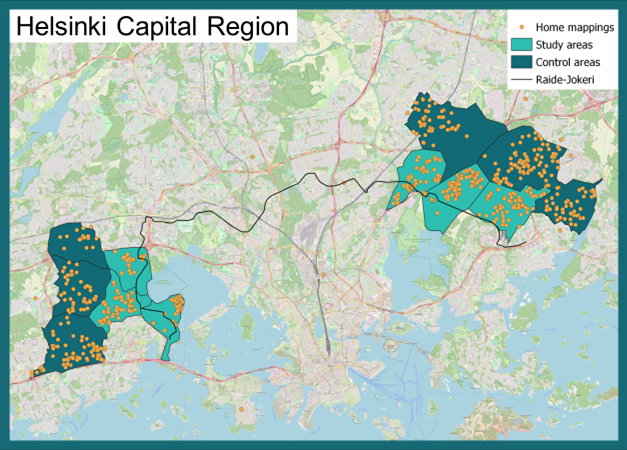In WP3 our goal is to study different urban interventions and monitor their impacts to support urban sustainability transformation. Earlier this year we started working with the city of Espoo to find a suitable urban intervention for our first case study. We ended up selecting the new Light Rail Line 15 (The Jokeri Light Rail) as our first case study.
Light rail line 15 which opened at the end of October 2023 has now been running already over a month, being the first light rail line in the Helsinki Capital Region. This new mode of transportation greatly enhances the traverse public transport connections in the capital region, by connecting Espoo’s Keilaniemi to Itäkeskus in eastern Helsinki. The introduction of the new light rail is now increasing the reliability, capacity, and comfort of public transport, among other benefits.
Before the opening of the new light rail, we conducted a map-based PPGIS (Public Participation GIS) survey with the residents of Espoo and Helsinki. We selected the participants from the area of influence of the new light rail, as well as from comparable control areas, that are not directly affected by the new light rail. We randomly selected a total of 5000 participants, who were approached with an invitation letter.
The survey was conducted using a PPGIS tool, Maptionnaire. The aim of the survey was to track the lifestyles and mobility habits of the participants. Among other things, the participants were asked to map out the different places they visit, report the transport modes they are using, and describe their experiences and preferences related to transportation. When designing the survey, we collaborated with WP2 and utilized their brilliant approach to scanning the urban lifestyles and preferences of urban residents.
From 5000 invitees we got 768 respondents, resulting in 15,4% response rate. The participants made in total 3511 mappings. After running the initial representativeness analyses, we can say that the survey represents the population overall fairly well. The most notable differences were that in the survey the more elderly groups were over-represented, while the working-age groups were slightly under-represented. Also, the participants with lower levels of education were under-represented, while the participants with higher levels of education were over-represented.
After one year of the light rail operating, we will conduct a follow-up survey to investigate if the introduction of the new light rail has affected the mobility habits of the residents, and if some groups are more prone to change their behaviour than others. We are eager to see the results of this longitudinal study. Meanwhile, we are now kicking off the selection of the second case study with the city of Lahti!




